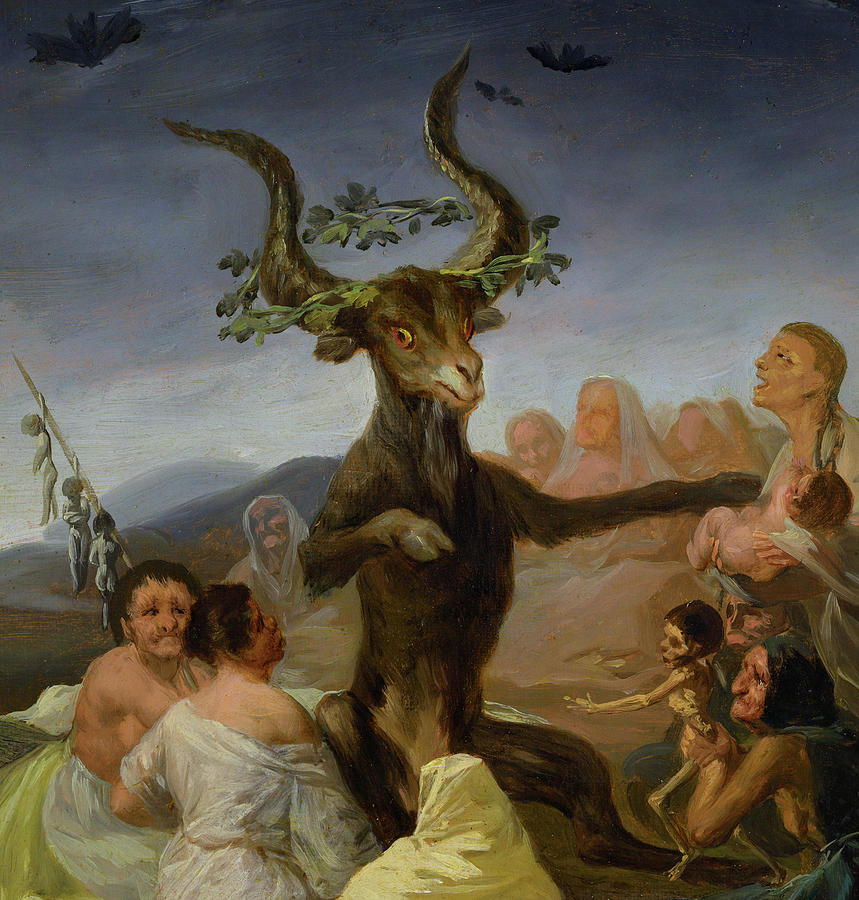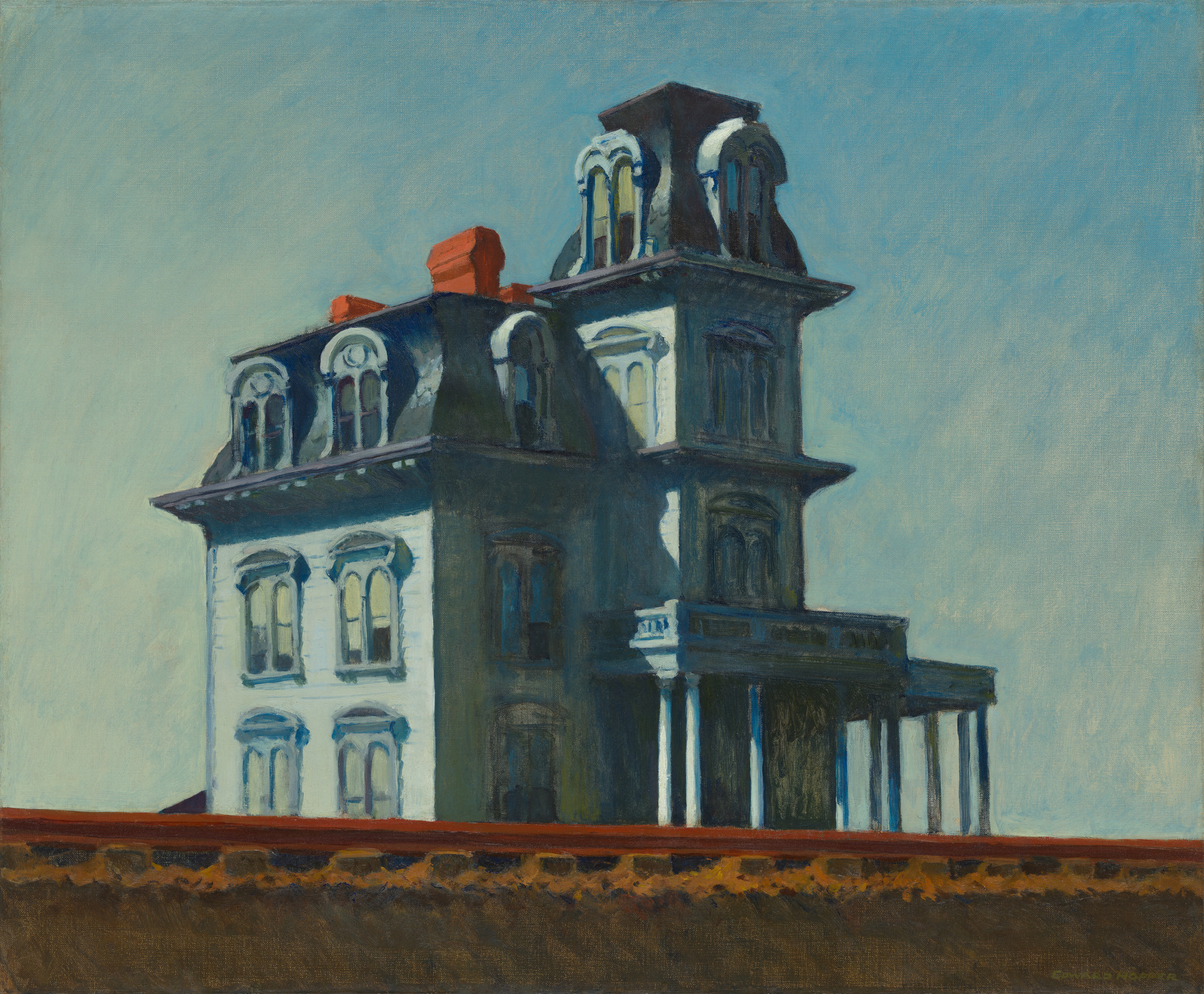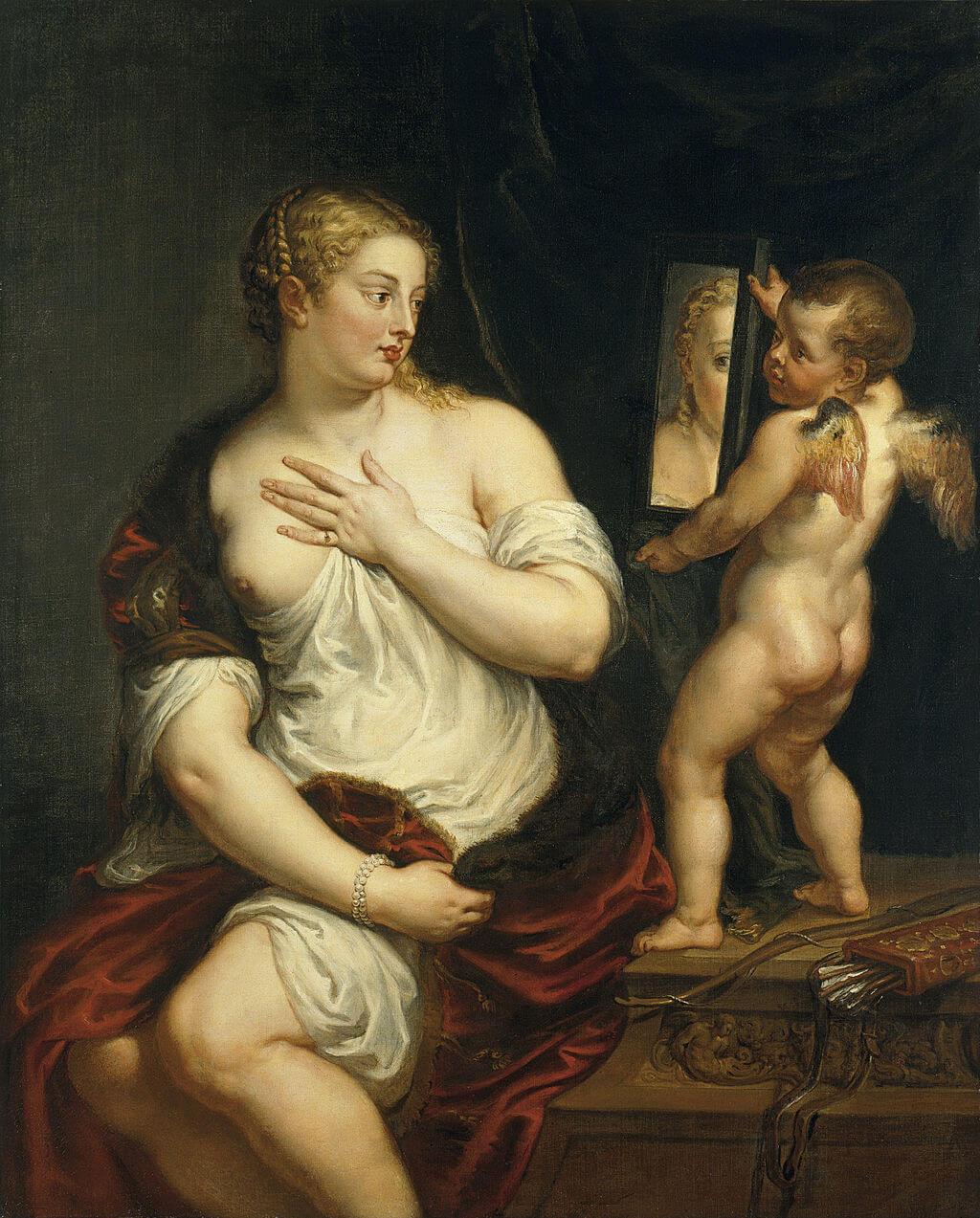Horror films appear doomed to live on the lowest shelf of human culture, with VHS tapes of Dude, Where’s My Car and a slew of Twilight paperbacks resold to bookstores in a mass purge of buyer’s remorse. Only when horror films have been cleverly re-categorized as “thrillers” and pushed as Oscar bait (Silence of the Lambs and Black Swan, we’re looking at you) can they appear to gain any kind of respect.
This is perplexing to the art enthusiast because horror is possibly the most visually complex genre. As a result, it frequently contains art-historical references that critics would prefer to ignore.
We’d like to set the record straight with ten of our favorite classic horror paintings.
1. Picture of Dorian Gray
Although he is not as well-known as some of the other painters on our list, director Albert Lewin chose Ivan Albright, the acknowledged “master of the macabre,” to paint the portrait of the protagonist in his horror film The Picture of Dorian Gray (1945), based on Oscar Wilde’s 1891 novel.

Gray, an attractive young man, commissions his portrait in the film, much as he does in the novel. The repercussions of Gray’s “dissolute and bad existence” appear in the picture rather than on Gray’s appearance as a result of a deal with the devil, and the vain reprobate remains as young and lovely as ever, despite the passage of time and his multitude of horrible crimes.
Even though the film was shot in black and white, Lewin photographed the portrait in color to emphasize Gray’s awful change. Albright’s “portrait” makes it plain to the spectator that Gray’s spirit is indeed terrible, no matter how youthful and attractive his fleshly shape and countenance appear; the painting is a superb depiction of the film’s theme: evil corrupts the soul.
2. Witches Sabbath
Director Robert Eggers, who also wrote the screenplay for ‘The Witch: A New England Folktale’ (2015), worked hard to re-create the world of the seventeenth century, in which his drama takes place so that the setting’s realistic depiction would add credibility to the film’s premise that witches existed.
Although witches were “a lot more primal and a lot scarier” than people today might imagine, Eggers said, the witch in his movie must also impress his audience as someone whose existence would have been believed by her contemporaries. For this reason, she couldn’t resemble “fairy tale” versions of witches. One way he ensured the accuracy of his depictions of the time of his movie’s setting was to consult “historians and museums and living history experts.”

To achieve this, he also attempted to make his witch convincing. Eggers was also inspired by Francisco Goya’s 1798 Witches Sabbath, a masterpiece by a prominent painter, for how to depict his witch. Although the painting is “outside” of Eggers’ seventeenth-century universe, the director believes it is a timeless depiction of the issue and one of the “greatest visual renderings of the subject.”
Ironically, while Eggers sees Goya’s painting as a study of witches, seeing a realistic portrayal of how they might appear in it, critics see Witches Sabbath, like the other paintings in Goya’s six works devoted to “the theme of witchcraft”, as “a satirical criticism of the superstitions of the educated society to which… the painter belonged.”
3. Necronomicon IV and Necronomicon V
H. R. Giger’s airbrushed paintings feature half-human, half-machine biomechanical forms, eel-like monsters, fetuses, phallic shapes, machinery, and a weird, horrific being that inspired the extra-terrestrial creature in Ridley Scott’s 1979 science-fiction horror film ‘Alien’.

Giger provided Scott with exactly what he desired by painting and sculpting the creature on set, as well as modeling the inside of the spaceship. Scott ordered that Giger “follow their form”, despite the artist’s preference to create the alien creature from scratch.
Scott was fascinated by “the peculiar manner in which” Giger’s Necronomicon IV (1976) and Necronomicon V (1976) paintings “conveyed both terror and beauty”. As a result, Giger’s alien not only horrified Scott’s audience, but he also received an Academy Award for Best Visual Effects for his work on the film in 1980.
4. The Garden of Earthly Delights
Regan MacNeil, who has been possessed by demonic spirits, spits vulgarity, obscenity, blasphemy, slurs, and invectives at the two priests who have come to her home to exorcise the demons within. The teenager’s strange behavior was an issue.

What does the devil’s voice sound like? The answer came from an odd source: Hieronymus Bosch’s famed surrealist triptych, The Garden of Earthly Delights, directed by William Friedkin and Chris Newman, who worked in the film’s sound department (1490-1510).
5. The Empire of Light
An outside image in Friedkin’s film was inspired by Rene Magritte’s bizarre series of oil and gouache paintings, collectively known as The Empire of Light (the 1940s-1960s). The paintings depict a similar scene: a home sits beneath a cloudy, blue midday sky, surrounded by evening shapes of trees, bushes, and shadows, illuminated only by a lamppost on the lawn and light in an upper window.
Many people find the scenario depicted in the artwork disturbing because it juxtaposes day and night in an impossible way—a perfect image for a film about a girl’s deliverance from demonic possession.
The moment in Friedkin’s film where Father Merrin arrives alone on the street, beneath a lamppost, outside the house where the devil awaits him was inspired by Magritte’s picture. The beautiful sky may represent heaven, God’s abode, while the darkness of the earth, the devil’s kingdom, depicts evil.
6. Amedeo Modigliani Paintings
In Stephen King’s novel, the monster is a shape-shifter capable of taking on the appearance of anyone’s worst nightmare.

It is most commonly seen as Pennywise the terrifying clown, but in director Andy Muschietti’s 2017 film adaptation of Stephen King’s novel, it also appears as a werewolf, a leper, and a female flutist who emerges from an Amedeo Modigliani painting in the father’s office Stanley Uris.
7. The Nightmare
Henry Fuseli painted Der Nachtmahr (The Nightmare) in 1781, in which an incubus, or male sex demon, sits on the abdomen of a sleeping woman wearing a nightgown, her arms and head dangling over the bed and the rest of her body in a sensual position. From the bedroom’s dark shadows rises a horse’s head (belonging to the nightmare).
The famous painting is the motif for the film of the same name, directed by Akiz, a pseudonym for Achim Bornhak: the movie’s main character, Tina, sleeps with the hideous demonic creature next to her. Is it possible that she is imagining its presence? Is it only she who notices it?
How does the entity relate to Tina, whether real or imagined and what does it represent? Bornhak appears to be deliberately unclear about the creature’s importance and, as a result, the film’s topic. Tina’s impending craziness could be symbolized by the fetus-like entity. It could represent her alienation from her classmates. Tina’s fear of rejection could be implied by this.
Fuseli’s paintings appear to confound interpretation as much as they may provide clues to the film’s meaning, leading critics to speculate even more about Bornhak’s intentions. Perhaps the significance of the picture is contingent on the audience’s interpretations.
8. House by the Railroad
Norman Bates’ Victorian mansion, which stands alone on a hill overlooking his remote motel and is well-known to millions, is one of the most memorable sections of Alfred Hitchcock’s gruesome 1960 classic Psycho. Fewer still are aware that the famous Edward Hopper’s 1925 work House by the Railroad served as inspiration for this house of horrors.

Hitchcock’s house atop the hill evokes precisely this vibe. The mansion seems threatening rather than inviting. It does not exist as part of a wider community; instead, it is isolated and alone. It isolates its residents from the larger world, allowing Bates to live in an imagined reality of his creation, a world that proves to be both lonely and insane.
9. Susanna and the Elders
Other paintings, in addition to Hopper’s, are inspired by one of the locales in Psycho, the parlor behind Bates’s motel office. Bates himself mentions the parlor as his “favorite place” in a preview for the film. He begins to explain the “huge significance” of one of the paintings on the parlor’s wall but stops short of finishing his sentence.

The picture is a reproduction of William van Mieris’ Susanna and the Elders from 1731, and it serves a purpose other than decoration or aesthetics: it conceals the peephole through which Bates observes, Marion Crane.
10. Venus with a Mirror
Titian’s 1555 masterwork Venus with a Mirror is also on exhibit in the Bates Motel’s parlor behind the front desk. The voluptuous goddess sits, her right arm and lower torso clothed in red velvet, gazing into a mirror held aloft by a winged Cupid for this reason.
A second attendant, holding a hand mirror behind her head, examines herself from the back as well as the front. Her rapt attention signals that she likes what she sees.

It’s also possible that Marion represents Bates the urge to submit to the seduction of female sexuality that his “mother” prohibits him (Venus) through voyeurism (Susanna), which culminates in violence and death for Marion, the personification of these opposing impulses and wants.















